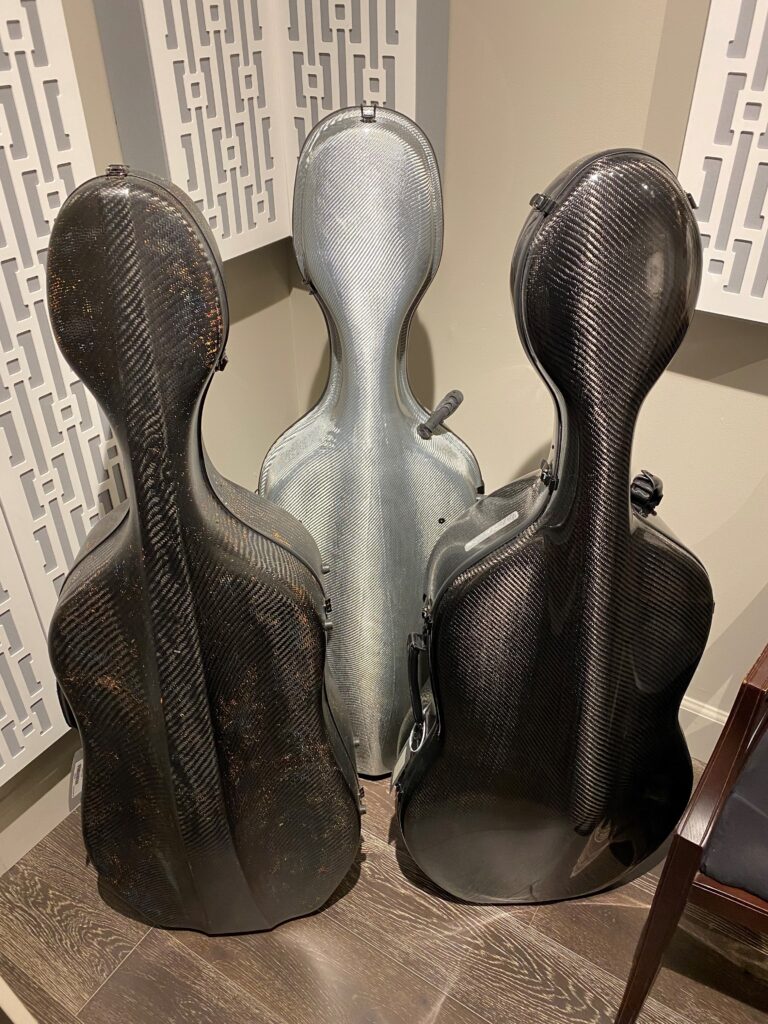
Carbon fiber. Once a highly esoteric, expensive, cutting edge piece of materials technology, it is now nearly ubiquitous in applications demanding a high strength-to-weight ratio. The aerospace industry pioneered the modern use of carbon fiber composites in turbine engine blades. Thanks to advances in production technology, we now find carbon fiber used in countless commercial products – cars, bicycles, canoes, airplanes…the list is endless!
In the string instrument world, carbon fiber is most often discussed in terms of bows. Yes, it makes an excellent alternative to Pernambuco for bows ranging from student-level to professional. Luis & Clark pioneered the use of carbon fiber for commercially available instruments, while countless case manufacturers have turned to CF for strong and light instrument cases. As certain natural materials become scarcer, CF will likely play an even bigger role in the future.
The proponents of CF suggest that it is more than just a suitable replacement – it is inherently superior to the natural material it replaces. With the violin world so deeply steeped in tradition, many cling dearly to the maple, spruce, ebony, and Pernambuco we have come to revere. I agree with those who take a middle position – CF is a tool in the toolbox of instrument, bow, and case manufacturers. It is the right tool in many situations, but not always. I do believe we will see CF mature into a completely viable material for nearly every aspect of instrument production, but it will not completely replace the traditional materials unless those materials cease to be available.
I have experience playing a Luis & Clark cello using an Arcus bow, with both of them stored in a Gewa CF case. It was an entirely convincing, musically thrilling experience. The future will be an exciting place for CF innovation in the violin world!

Recent Comments